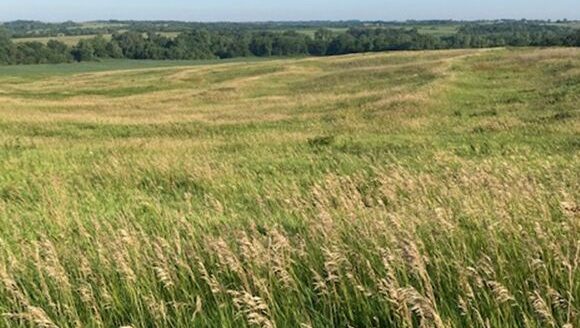USDA encourages producers to enroll grasslands into working land conservation

Grassland Conservation Reserve Program open from April 4 to May 13
The U.S. Department of Agriculture encourages producers and landowners to enroll in the Grassland Conservation Reserve Program now through May 13.
Grassland CRP provides a unique opportunity for farmers, ranchers, and agricultural landowners to keep land in agricultural production and supplement their income while improving their soils and permanent grass cover.
The program had its highest enrollment in history in 2021 and is part of the Biden-Harris administration’s broader effort to equip producers with the tools they need to help address climate change and invest in the long-term health of our natural resources.
Grassland CRP is a federally funded voluntary working lands program. Through the program, USDA’s Farm Service Agency provides annual rental payments to landowners to maintain and conserve grasslands while allowing producers to graze, hay, and produce seed on that land. Maintaining the existing permanent cover provides several benefits, including reducing erosion, providing wildlife habitat and migration corridors, and capturing and maintaining carbon in the soil and cover.
“Grassland CRP is an important working lands conservation tool that offers a win-win to both our country’s producers and the environment by supporting and enabling grazing activities, while at the same time promoting plant and animal biodiversity and stemming rangeland conversion,” said FSA Administrator Zach Ducheneaux. “We had a successful signup last year, and we look forward to broadening our base and working with new producers, particularly our historically underserved producers, to ensure they can access the program and its many benefits.”
FSA provides participants with annual rental payments and cost-share assistance. The annual rental rate varies by county with a national minimum rental rate of $13 per acre for this signup. Contract duration is 10 or 15 years.
Grassland CRP National Priority Zones
Because Grassland CRP supports not only grazing operations but also biodiversity and conserving environmentally sensitive land such as that prone to wind erosion, FSA created two National Priority Zones in 2021: the Greater Yellowstone Migration Corridor and Dust Bowl Zone. As part of the Biden-Harris administration’s focus on conservation in important wildlife corridors and key seasonal ranges, for this year’s signup, FSA is expanding the Greater Yellowstone Wildlife Migration Corridor Priority Zone to include seven additional counties across Montana, Wyoming, and Utah, to help protect the big-game animal migration corridor associated with Wyoming elk, mule deer, and antelope.
“Over the past year, we have continued to make improvements to Grassland CRP to improve its effectiveness and help local communities meet their conservation goals, including preserving critical wildlife habitat. The addition of seven counties to the Greater Yellowstone Wildlife Migration Corridor Priority Zone will help us do just that,” Ducheneaux added.
Offers within one of these National Priority Zones will receive an additional 15 ranking points and $5 per acre if at least 50% of the offer is located in the zone.
Alongside Grassland CRP, producers and landowners can also enroll acres in Continuous CRP under the ongoing sign up, which includes projects available through the Conservation Reserve Enhancement Program and State Acres for Wildlife Enhancement.
Broadening reach of program
As part of the Agency’s Justice40 efforts, producers and landowners who are historically underserved, including beginning farmers and military veterans, will receive 10 additional ranking points to enhance their offers.
Additionally, USDA is working to broaden the scope and reach of Grassland CRP by leveraging the Conservation Reserve Enhancement Program to engage historically underserved communities. CREP is a partnership program that enables states, Tribal governments, non-profit, and private entities to partner with FSA to implement CRP practices and address high priority conservation and environmental objectives. Interested entities are encouraged to contact FSA.
Landowners and producers interested in Grassland CRP should contact their local USDA Service Center to learn more or to apply for the program before the May 13 deadline. Additionally, fact sheets and other resources are available at fsa.usda.gov/crp.
Signed into law in 1985, CRP is one of the largest voluntary private-lands conservation programs in the United States. The working lands signup announced today demonstrates how much it has evolved from the original program that was primarily intended to control soil erosion and only had the option to take enrolled land out of production. The program has expanded over the years and now supports a greater variety of conservation and wildlife benefits, along with the associated economic benefits.



